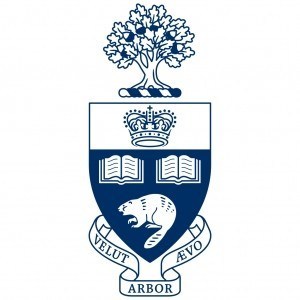Photos of university / #umanitoba
The Bachelor of Arts in Art History at the University of Manitoba offers students an in-depth exploration of the development, interpretation, and significance of visual arts across diverse cultures and historical periods. This program integrates critical analysis, historical context, and theoretical frameworks to foster a comprehensive understanding of art as a reflection of societal values, beliefs, and ideas. Throughout the degree, students engage with a wide range of topics, including ancient civilizations, medieval art, Renaissance masterworks, modern and contemporary art movements, and global artistic traditions. The curriculum combines coursework in visual analysis, historical research methods, and art criticism, providing students with essential skills for interpreting artworks and understanding their cultural significance.
Students have opportunities to participate in internships, museum visits, and collaborative projects that facilitate practical experience and professional development. The program emphasizes the importance of academic research, encouraging students to develop their own perspectives and arguments through essays, presentations, and research papers. Faculty members are experts in various areas of art history, offering mentorship and guidance tailored to students' interests and career goals. Graduates of the Art History program are well-prepared for careers in museums, galleries, cultural organizations, publishing, education, and further academic study. The university’s supportive academic community, extensive resources, and vibrant campus culture create an enriching environment for students passionate about understanding and appreciating the visual arts of the past and present.
The Art History program at the University of Manitoba offers a comprehensive exploration of the visual arts from ancient times to the present day. Students will engage with a diverse range of artistic periods, styles, and media, developing a deep understanding of the cultural, social, and historical contexts that shape artistic production. The curriculum emphasizes critical analysis, scholarly research, and effective communication, preparing graduates for careers in museums, galleries, arts administration, academia, and related fields. Core courses cover topics such as ancient and medieval art, Renaissance and Baroque art, modernism, and contemporary art practices. Students also have opportunities to specialize in areas like indigenous art, Asian art, or digital media. The program encourages experiential learning through museum internships, field trips, and research projects, fostering hands-on understanding of art conservation, curation, and interpretation. Faculty members are renowned scholars who bring a wealth of expertise and international perspectives. The program aims to cultivate not only technical knowledge but also an appreciation for diverse artistic expressions and their societal impacts. Graduates will be equipped with analytical skills, a broad historical perspective, and the ability to critically engage with complex visual and cultural materials. Whether aiming for advanced academic research, museum careers, or arts-related professions, students receive a solid foundation and valuable professional skills through this dynamic and interdisciplinary program.
Program Requirements:
The Bachelor of Arts in Art History at the University of Manitoba requires students to complete a comprehensive curriculum designed to develop a foundational understanding of the history of art and visual culture. Incoming students must typically meet the general admission standards of the university, including high school diploma equivalency and language proficiency if applicable. Once admitted, students are advised to consult the program-specific requirements outlined in the university catalog.
The degree program generally mandates the completion of core courses in early art history, Western art from antiquity to the present, as well as courses exploring diverse cultural contexts such as Asian, African, Indigenous, and Islamic art. Students are encouraged to take a combination of lecture and seminar courses, which include but are not limited to foundations in art analysis, critical theory, and visual studies.
In addition to coursework, students must fulfill a set of elective credits, allowing for specialization or exploration of interdisciplinary topics related to art history. The program also emphasizes the development of research skills, requiring students to complete term papers, presentation projects, and a culminating research paper or thesis in their final year.
Language proficiency requirements may include courses in relevant foreign languages such as Latin, Greek, French, or other languages pertinent to the student's area of focus. Practical components, such as museum visits, internships, or participation in exhibitions, may be encouraged but are not always mandatory.
The program typically spans four years for a full-time student and may be completed part-time with approval. Students are advised to work closely with academic advisors and faculty members to tailor their academic pathway towards their interests and career goals. Upon successful completion of all coursework, research projects, and any additional departmental requirements, students will be awarded the Bachelor of Arts in Art History.
In summary, the program requirements include core course completion, elective credits, research projects, language proficiency, and active engagement with the field through practical experiences. This structured curriculum aims to equip students with a comprehensive understanding of art history, critical analysis skills, and the ability to contextualize art within broader historical and cultural frameworks.
The University of Manitoba offers a range of financing options for students enrolled in its Art History program to facilitate their academic pursuits and reduce financial barriers. Domestic students benefit from several scholarships, bursaries, and awards based on academic achievement, financial need, artistic merit, and leadership qualities. These awards are available through the university’s internal funding programs, including the Entrance Scholarships, the Financial Need-Based Bursaries, and Major Scholarships such as the President's Scholars Award. International students also have access to certain merit-based scholarships, though the number and amount may differ compared to those available to Canadian students.
In addition to university-specific awards, students are encouraged to apply for external funding sources, including government grants such as the Canada Student Grants and loans, which provide financial assistance based on income levels and other eligibility criteria. The Manitoba Student Assistance Program (MSAP) offers loan options and work-study opportunities to eligible students, enabling them to earn part-time income while pursuing their degree. Students can also explore departmental awards specific to Art History, which may include research grants, travel grants for conferences and fieldwork, and project-specific funding.
Work opportunities are available on-campus, including positions within the university’s museums, galleries, and administrative offices, providing practical experience along with income. Many students also find part-time jobs in related field sectors, including art galleries, museums, and cultural organizations in Winnipeg. The university provides financial planning and advising services to help students manage their budgets and plan effectively for the duration of their studies.
Overall, the financing studies at the University of Manitoba for an Art History program are comprehensive, combining internal scholarships, government aid, external grants, work opportunities, and financial planning resources. These options are designed to support students in achieving their academic goals while minimizing financial stress and ensuring access to a quality education in the arts and humanities.
Art History at the University of Manitoba offers students a comprehensive exploration of visual culture from ancient to contemporary times. This program aims to develop students' critical thinking, analytical skills, and appreciation for diverse artistic expressions across different cultures and historical periods. Through a combination of lectures, seminars, and practical research projects, students gain in-depth knowledge of art movements, significant artworks, and their cultural, social, and political contexts. The curriculum covers a wide array of topics including Western art history, Indigenous art, Asian art, and the history of modern and contemporary art. Students are encouraged to engage critically with artworks, theories, and historiography, sharpening their interpretive and research abilities. The program also provides opportunities for hands-on experience with art conservation, curatorial practices, and museum work, preparing graduates for careers in arts administration, curation, education, or further academic research. Faculty members are distinguished scholars with expertise in various fields of art history and actively engage in research, which enriches classroom learning and offers mentorship opportunities for students. The university supports students in their academic pursuits through various resources, including the University of Manitoba Art Collection, access to local museums, and participation in conferences and exhibitions. The program can lead to undergraduate or graduate degrees, offering pathways for continued study or professional work in the arts sector. Students also benefit from collaborations with community arts organizations and opportunities to showcase their work. Overall, the Art History program at the University of Manitoba is designed to foster a deep understanding of visual arts, their cultural significance, and their impact in shaping societies throughout history.



